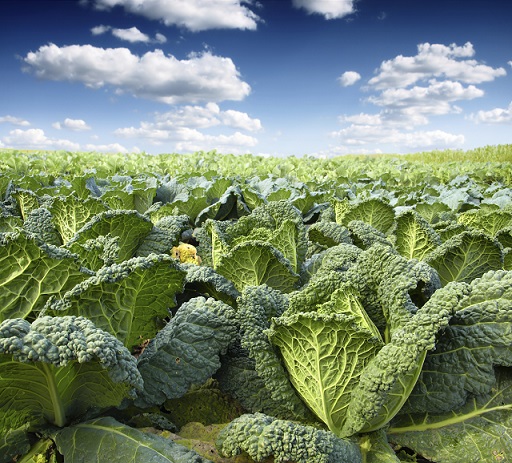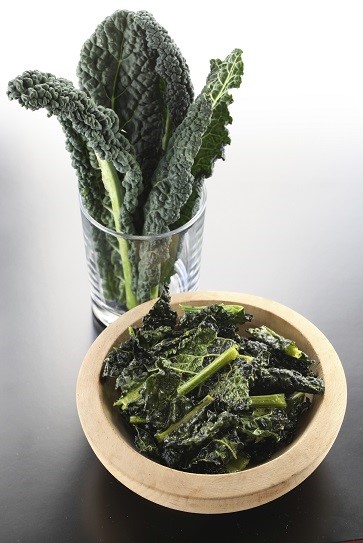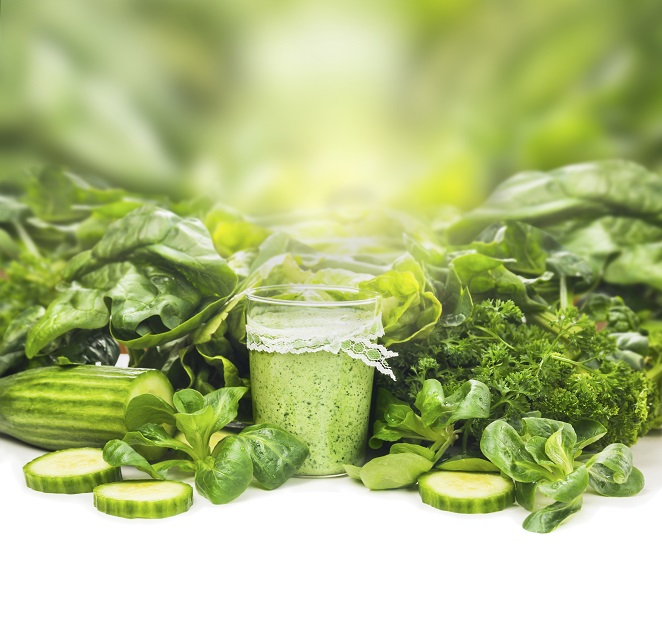 Kale is one of the great health fads, an all-conquering craze that since 2010, has swept through the West Coast like a tsunami.
Kale is one of the great health fads, an all-conquering craze that since 2010, has swept through the West Coast like a tsunami.
In two years, mentions of kale on American restaurant menus shot up by 233%. The quantity grown by American farmers increased by 57% from 2007 to 2012. US activists are plotting to make October 2nd national kale day, while Whole Foods reportedly sells 22,000 bunches in its grocery stores every single day.
The list of kale related foods is enormous, including kale chips and dried kale seasoned with spices. Green kale ice cream is a hit among vegans and even kale nail polish is available.
Also available are kale baked eggs, pickled kale, raw kale noodles, apple kale muffins, candy kale chips (featuring honey, sea salt, and olive oil), kale cocktail (featuring gin, kale syrup, lime juice, orange, and Italian cynar), frozen kale cubes for drinks, kale pizza dough, kale brownies, kale sauce, cheesy kale crackers, kale fudge pops, kale cookies, kale vegan spice cake, kale cupcakes, and kale butter.
There’s even kale soda; a marketing genius must have realised that slapping the world kale on a soda can automatically made it seem healthy. The actor Jake Gyllenhaal once needed to lose 30 pounds for the movie Nightcrawler; his solution was running 15 miles a day and eating nothing but kale and bubble-gum. This hype culminated with the creation of the kale-only diet (not a diet you should ever follow).
Consequently, kale is now a dirty word among hippie haters and people who distrust passing fads and trends. However, cut through the hype, and the old truth remains: kale is extremely nutritious…
…and most importantly, that nutrition is well suited to clearing acne.
Kale is extremely rich in acne nutrients
In the 1930s, prior to World War 2, roughly 75% of Britain’s entire food supply was shipped in via cargo boats. This became totally unsustainable once the war began. After failing miserably to invade southern England during the battle of Britain in 1940, Adolf Hitler decided to force Britain to its knees through starvation instead.
Hence, his U-boat army massively stepped up its torpedoing efforts, and by 1941, annual food imports had halved to 14.65 million tonnes. Something had to be done, otherwise Britain would indeed starve to death.
The saviour of Britain was kale. The government launched the dig for victory campaign with the tagline of “spades not ships”. Citizens were encouraged to turn gardens, public parks and allotments into gardens, to grow mountains of potatoes, carrots and other cheap but nutritious vegetables.
Kale was the program’s poster child, because as a weed, it grew extremely easily. Kale is extremely hardy since it is much less domesticated (and hence reliant on farmers) than broccoli or lettuce. Kale also survives unusually long into the cold, dark winter…
Read Annihilate Your Acne – learn how to clear your skin permanently
…but the biggest advantage of kale was its extraordinary nutrient profile. Kale is far more nutritious than even broccoli, spinach, or cabbage. 100 grams of raw kale contains…
15376IU of vitamin A (308% of the RDA) – an all-important nutrient for acne patients because it directly restrains your sebaceous glands, the glands that pump out oil (sebum) onto your skin’s surface. Vitamin A also controls the production of keratin, the protein that glues dead skin cells together into pore blocking clumps.
Vitamin A can even defend against acne caused by UV radiation in sunlight. The vitamin A was a prime bonus in wartime Britain, since it helps with vision; the nighttime blackout caused great problems in the early months after citizens routinely fell into ponds and ditches.
120mg of vitamin C (200%) – a cofactor needed to create collagen, the main structural protein of your skin. More collagen equals greater skin hydration and faster wound healing (and thus healing of old acne). Vitamin C also lowers stress hormones and is the main water soluble antioxidant in humans.
34mg of magnesium (8%) – deficiency in magnesium is rampant, making kale all the more useful for acne. Increasing magnesium can control stress hormones, optimise sleep neurotransmitters, and lower insulin, the most dangerous hormone for oily skin.
An ORAC score of 1770 – the ORAC scale measures antioxidants and kale scores fairly strongly. Kale reportedly has over 45 different flavonoid antioxidants, joining forces with the carotenoids lutein and zeaxanthin (coming soon). It just defeats broccoli with its ORAC score of 1510.
How kale compares to other vegetables
 The strength of the nutrition alone makes kale fantastic for clear skin. The same weight of broccoli has 12% of the RDI for vitamin A, 156% for vitamin C, and 5% for magnesium. Kale’s vitamin A content (in the form of beta-carotene) is where it really shines.
The strength of the nutrition alone makes kale fantastic for clear skin. The same weight of broccoli has 12% of the RDI for vitamin A, 156% for vitamin C, and 5% for magnesium. Kale’s vitamin A content (in the form of beta-carotene) is where it really shines.
For the same acne nutrients, spinach contains 187%, 46%, and 17%. Cabbage contains 1%, 60%, and 3%. Brussel sprouts contain 15%, 141%, and 5%. Kale ranks first for acne-clearing vegetable nutrition.
Kale is also a fantastic source of calcium, with 14% per 100 grams. Calcium isn’t especially useful for acne, but as we discussed in my eBook, many acne patients have genetic sensitivities to the proteins and hormones found in dairy. Therefore, many acne patients could use alternative sources, and gram for gram, kale contains more calcium than milk.
Furthermore, a human study from 1990 found that kale’s calcium was 25% better absorbed than calcium from milk. The problem with dairy is that the calcium is bound in a molecular complex with a protein called casein. Monogastric mammals like us have trouble digesting casein, so while some manage, many have a genetic inability to extract the calcium inside it.
Kale is also a highly alkalising vegetable, and by reducing the body’s overall acid load, it decreases the requirement for acid neutralising minerals. Calcium is one of those minerals, as is acne-clearing magnesium.
If you need an alternative calcium source that doesn’t cause acne, kale is hard to beat.
Kale – the greatest source of lutein
One of the great overlooked acne compounds is arguably lutein, or its almost identical counterpart, zeaxanthin.
Lutein is a carotenoid antioxidant, a class with over 600 members, which provide yellow, orange, and red pigments to foods (pumpkins, sweet potatoes, carrots). It is a phytonutrient, compared to zinc or vitamin C, which are micronutrients. Small quantities are found in multivitamins, since lutein is critical for eye health…
…but lutein is also a stellar antioxidant. The good news? Kale is the single best source available from a grocery store. 100 grams of raw kale contains 35571mcg of lutein/zeaxanthin, and the next best food is spinach with 15691mcg when perfectly cooked. Eggs are widely hailed for their lutein content, but one whole raw egg contains just 331mcg. Only a rare flower called nasturtium contains more lutein than kale.
Lutein heals pimples from many directions, but its best feature is being a fat-soluble antioxidant. One of the worst substances for acne is squalene peroxide, a mutant by-product which forms when free radicals attack natural squalene in your skin’s oil. Importantly, squalene peroxide is a lipid peroxide, which only fat soluble antioxidants like lutein can destroy:
ONE: this 1999 study found that both lutein and zeaxanthin prevented lipid peroxidation caused by free radicals. They specifically protected against UV damage to the skin from sunlight.
TWO: this double-blind, placebo-controlled trial from 2013 fed 117 patients 10mg or 20mg of lutein for 12 weeks. Blood lutein levels significantly increased after 12 weeks. There was a large drop in malondialdehyde, the most commonly used biomarker of lipid peroxides. Inflammation levels fell after 12 weeks too, as measured by c-reactive protein.
THREE: we also have this study on kale itself. Rats were fed a diet containing no kale, raw kale, or cooked kale. After 21 days, the kale-gobbling rats had substantially lower malondialdehyde and lipid peroxidation by-products. The scientists concluded: “diet with kale, both raw and cooked, efficiently inhibited the lipid peroxidation process in rats’ organisms.”
It gets better for us acne patients too. While all of kale’s carotenoid antioxidants will prevent acne to some extent, lutein preferentially builds itself into your face.
This massive review compiled many animal and human studies and found that lutein is especially strong at protecting skin cells from light induced oxidative damage. By dining on kale, you are basically building a strong antioxidant armour directly into your skin.
Similarly, lutein also accumulates in high concentrations in the macular, the centre of the eye’s retina, where it is an efficient absorber of blue light. Hence, lutein can protect against light-induced oxidative damage, which is believed to play a role in age-related macular degeneration (AMD).
Recommended – 6 vitamins and minerals which could finally clear your acne
There’s also this study, where Alzheimer’s patients have lower levels of lutein in their red blood cells. Lutein isn’t the only useful phytonutrient in kale; it contains many sulphurous compounds which, when digested, generate healthy by-products such allyl-isothiocyanate, phenethyl-isothiocyanate, and benzyl-isothiocyanate, which are all linked to cancer prevention.
This study found that regularly drinking kale juice could increase gluthathione production, a self-manufactured antioxidant which countless acne patients lack. The sulphurous compounds are likely responsible; the human body requires sulphur to manufacture glutathione.
Kale is also a natural source of indole-3-carbinol, the parent compound of the popular estrogen-reducing acne supplement DIM. Like broccoli, kale is a great source of sulforaphane, which slashes inflammatory biomarkers linked to acne such as TNF-a (see here).
The truth about goitrogens in kale
 If you’re getting excited about kale for acne, then there’s plenty of people who’d love to dampen your enthusiasm.
If you’re getting excited about kale for acne, then there’s plenty of people who’d love to dampen your enthusiasm.
You see, broccoli, kale, cabbage, brussel sprouts, bok choy, and mustard greens contain compounds called goitrogens, which are said to block the production of vital thyroid hormones. It’s argued that those with thyroid problems shouldn’t even dream of eating kale, and that their entire superfood status is a massive injustice.
The truth is that goitrogens do exist and at high intakes, they do block iodine uptake into the thyroid. Some animal studies have negatively affected thyroid function using goitrogens in kale specifically…
…but the good news is that goitrogens only wreak havoc in certain circumstances, such as…
An iodine deficient diet – iodine deficiency is a global pandemic. Soils are depleted of iodine worldwide and many of us neglect seafood, the biggest source, in favour of industrially produced chicken and beef. The small iodine blocking effect of goitrogens is only problematic if you’re getting very little iodine anyway. You can acquire iodine from seaweed, eggs, strawberries, and seafood.
Massive quantities – apparently one woman ended up in a hypothyroid induced coma after feasting on kilograms of raw bok choy every day. There’s no need to eat that many cruciferous vegetables, for either health or acne.
Cooked raw – cooking is the easiest way to neuter the goitrogen problem of kale. Among cruciferous vegetables generally, steaming reduces the goitrogen content by 30%, boiling by 65%, and boiling and discarding the water by a massive 90%.
Realistically, you only need to minimise kale (though not outlaw entirely) if you have existing thyroid problems.
Even then, iodine supplementation might solve those problems anyway, making kale safe once more. Whether goitrogens cause acne has never been proven.
Pregnant women are extra sensitive to goitrogens, as a healthy baby requires particularly sharp thyroid functioning. However, the danger zone quantities are still too high, unless you’re scoffing down kale raw. This study fed humans another goitrogen-loaded vegetable, raw broccoli sprouts, and noted no abnormal thyroid activity after 7 days.
Conclusion – possibly the best green vegetable for acne
The old saying “there’s no smoke without fire” fits kale like a glove. While you should ignore the hippies and their all-kale diets, adding a couple of servings per week will feed your skin numerous powerful acne nutrients.
The final question is how to cook it. Every cooking method will deplete the vitamin C count slightly, but studies show that steaming preserves the acne nutrition the best. I advise you to steam kale moderately to lower the goitrogen count, and also improve the taste, but skip boiling, because it can slash the vitamin C content by up to 70%.
Organic kale is superior since kale consistently appears on the annual “dirty dozen” list of pesticide-contaminated foods. If organic kale is unaffordable or unavailable, then the sheer volume of nutrition will still outweigh the pesticides and herbicides for a net acne benefit.
Finally, there are two main varieties to consider: curly kale, the standard variety, and dinosaur kale.
Both are bursting with acne nutrition but dino kale is even better; the minerals are more bioavailable due to dino kale containing less oxalates, acids which bind with minerals like magnesium and calcium. Dino kale is quite uncommon, but keep your eyes open!
NEXT: forget creams and moisturisers – discover the ultimate acne-clearing diet
Thanks for reading!

Great post! Have nice day ! :)